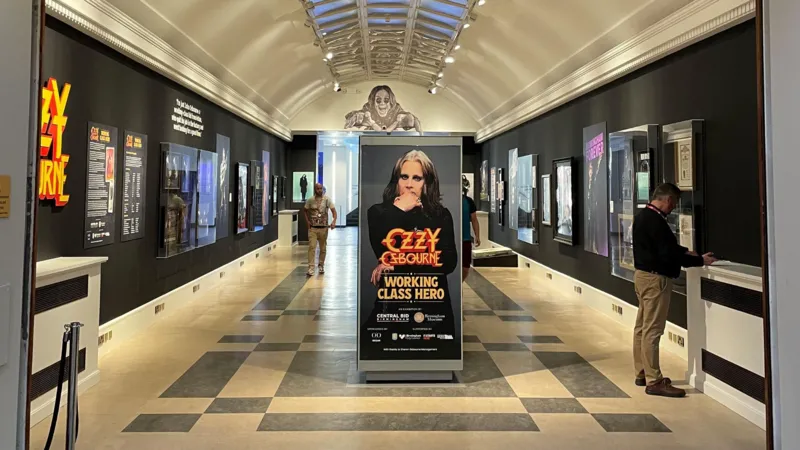An exhibition dedicated to the legendary rock icon Ozzy Osbourne has been extended by more than three months due to overwhelming public demand. Titled Ozzy Osbourne: Working Class Hero, the exhibition opened at the Birmingham Museum and Art Gallery on 25 June, coinciding with Black Sabbath’s historic farewell concert at Villa Park on 5 July—a deeply emotional event for fans and the band alike. Tragically, Ozzy Osbourne passed away just two weeks later, making the exhibition not only a celebration of his life and career, but also a powerful memorial to one of rock’s most influential figures.
Originally scheduled to close on Sunday 28 September, the exhibition has now been extended until Sunday 18 January. The museum cited the immense public interest and high visitor numbers as the key reasons for the extension. Since its launch, the exhibition has drawn thousands of visitors from across the UK and beyond, with many fans describing it as a deeply moving and nostalgic experience. Some traveled specifically to Birmingham to pay tribute to their musical hero, while others found themselves reconnecting with Ozzy’s music in a new light following his passing.
The Working Class Hero exhibition focuses on Ozzy Osbourne’s life, from his humble beginnings in Aston, Birmingham, to his global success as the frontman of Black Sabbath and later as a solo artist. It showcases rare memorabilia, including personal letters, stage outfits, original album artwork, hand-written lyrics, instruments, and unseen photographs from various stages of his life. Visitors can also explore video footage of interviews and iconic performances, along with a powerful audio experience that captures the raw energy of his music.
One of the most talked-about features is a specially curated tribute wall where fans can leave messages, stories, and artwork in memory of Ozzy. The wall has become a focal point of the exhibition, reflecting the deep connection so many people felt with him. From older fans who witnessed his rise in the 1970s to younger generations who discovered him through later work or reality television, the messages reveal a profound impact that transcends age and genre.
Beyond celebrating his musical achievements, the exhibition also paints a picture of Ozzy as a symbol of resilience. It highlights the many personal and professional challenges he faced throughout his life, including addiction, health struggles, and public scrutiny. Yet through it all, he remained a powerful and unique figure in the music world, constantly evolving and staying relevant across decades.
The extension of the exhibition allows more fans the opportunity to experience this deeply personal and cultural tribute. For Birmingham, Ozzy was more than a rock star—he was a local hero, a symbol of working-class determination, and a global ambassador for the city’s musical legacy. The museum has noted that the exhibition has not only increased visitor numbers but also sparked renewed interest in Birmingham’s music heritage.
As the exhibition continues into January, it stands as both a celebration and a farewell. Ozzy Osbourne: Working Class Hero is more than an exhibition—it’s a lasting tribute to a man who shaped the sound of modern rock and whose influence will echo for generations to come.








